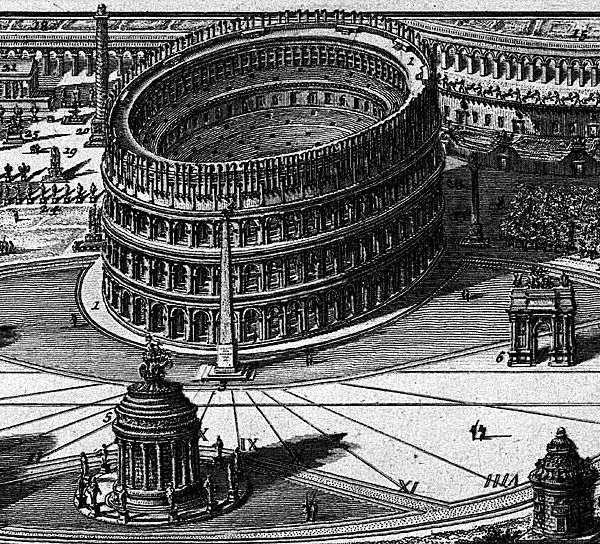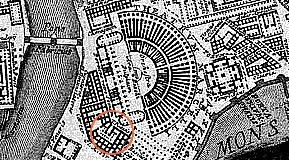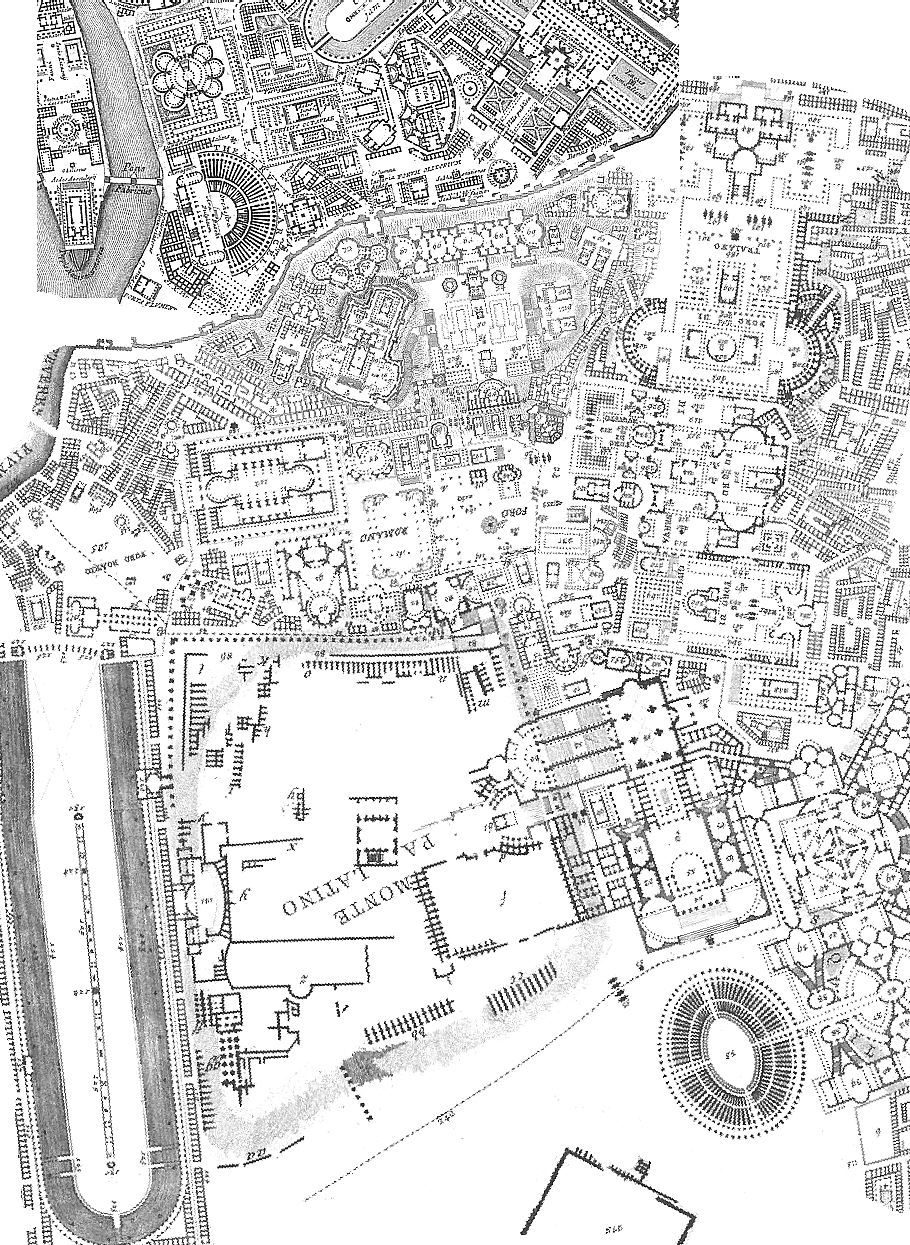Quondamopolis | Architecture post Semiquincentennial |
|
Similarly, the T[emplum] Pietatis and the Theatrum Marcelli are delineated together within the Ichnographia, yet the temple of Pietas was destroyed by Augustus in order to make room for the theater of Marcellus.
Of more interest, however, is that Piranesi also omitted buildings that should have been delineated within the Ichnographia. While the Sepulchrum Honorij Imp., the mausoleum built by the emperor Honorius circa 400, is within the Ichnographia, the building that the mausoleum was in actuality attached to, the basilica of St. Peter built by the emperor Constantine circa 330, is not delineated within the Ichnographia.
|
Within the first volume of Le Antichitŕ Romane are a series of plans of ancient Rome: baths of Titus, topographical map, barracks of Tiberius, baths of Caracalla, nymphaeum of Nero, baths of Diocletian, Forum Romanum, Capitoline Hill. When combined with the Ichnographia Campus Martius these plans constitute an almost complete plan of ancient Rome. |
www.quondam.com/33/3307c.htm | Quondam © 2016.08.17 |



